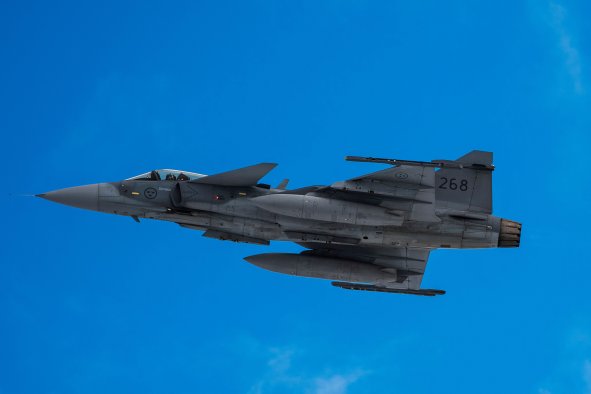North Korea on Sunday accused the U.S. of posing a nuclear threat to the country after Washington and its security treaty ally South Korea conducted a simulation exercise.
The foreign ministry in Pyongyang said the U.S. and South Korea conducted a simulation drill based on a nuclear war scenario. It slammed the two allied countries for treating the North as a "threat," and said via the KCNA state-run news service that the U.S. was "gradually clarifying" its nuclear threat to sovereign states.
The Extended Deterrence Strategy and Consultation Group, formed by the U.S. and South Korea, held its fifth meeting in Washington, D.C., on September 4. Both sides discussed and coordinated on security strategy and policy issues affecting the Korean Peninsula.
Extended deterrence, also known as providing a "nuclear umbrella," is a commitment made by the U.S. to deter and respond to nuclear and non-nuclear scenarios using the full range of its military capabilities in defense of South Korea.
South Korea is one of the three countries in Asia, besides Japan and Australia, that benefit from American extended deterrence. The two countries formed the alliance under the 1953 Mutual Defense Treaty, which was signed shortly after the Korean War armistice.
The Stockholm International Peace Research Institute estimated that North Korea, ruled by the Kim Jong-un regime, had assembled approximately 50 warheads as of January. It has sufficient fissile material for nuclear fission to reach a total of up to 90 warheads as well.
As a non-nuclear weapon state, South Korea is protected by the American nuclear forces. It is estimated that the U.S. has 100 B61 nuclear gravity bombs for potential use in support of non-European allies, including in Northeast Asia, the Bulletin of the Atomic Scientists said.
The U.S. has also enhanced the deployment of its nuclear forces in and around the Korean Peninsula. USS Kentucky, a ballistic missile submarine, arrived in South Korea in July last year. It was the first visit by a nuclear-capable American submarine in four decades.
There are currently 28,500 U.S. service personnel deployed in South Korea, where they hold exercises with their South Korean counterparts regularly to strengthen both sides' defensive posture. The recent drills were the Ulchi Freedom Shield and the Ssang Yong.
Following the conclusion of the Extended Deterrence Strategy and Consultation Group meeting, the first interagency table-top simulation by the Nuclear Consultative Group between the U.S. and South Korea was held in Washington, D.C., on September 5-6.
The U.S. Defense Department said the simulation strengthened "the alliance's approach to cooperative decision-making about nuclear deterrence and planning for potential nuclear contingencies on the Korean Peninsula." It claimed its nuclear commitment is ironclad.
North Korea's foreign ministry said in response that it expressed serious concern as the "hostile forces" of the U.S. and South Korea were openly attempting to make a nuclear attack on a sovereign state. It said this would increase the possibility of a nuclear clash.
"The U.S. nuclear threat and blackmail will be thoroughly deterred by the DPRK's more perfect and developed nuclear forces for self-defense," the ministry said in a statement that used the official name of the country, the Democratic People's Republic of Korea.
The North would "strictly control and manage" the Korean Peninsula's security situation while continuing to take practical measures to cope with what it called a "long-term nuclear confrontation" with the U.S., North Korea's foreign ministry warned.
Kim Yong-hyun, the South's new defense chief, warned on Friday that the North's regime would face the end in the event of provocations. "We will make them pay a terrible price under the principle of punishing immediately, strongly, and until the end," he said.
Kim is a retired general in the South Korean army and has a hardline stance against North Korea, the local media reported. During a parliamentary confirmation hearing, he said the possible options to respond to the North's nukes included the South's nuclear armament.
This is how extended deterrence served another purpose—as a nonproliferation tool. The U.S. can obviate the need for South Korea to develop or acquire and field their own nukes by providing nuclear protection, preventing further nuclearization of the Korea Peninsula.
However, there has been strong support for the redeployment of U.S. nuclear weapons in South Korea recently. The U.S. military stationed nuclear weapons in South Korea during the Cold War from 1958 to 1991, where it reached peak in 1967 with around 950 nukes.
South Korean Principal Deputy National Security Adviser Kim Tae-hyo said on September 3 that if Donald Trump is reelected, Washington's nuclear response to North Korea could be weakened.
Disclaimer: The copyright of this article belongs to the original author. Reposting this article is solely for the purpose of information dissemination and does not constitute any investment advice. If there is any infringement, please contact us immediately. We will make corrections or deletions as necessary. Thank you.



